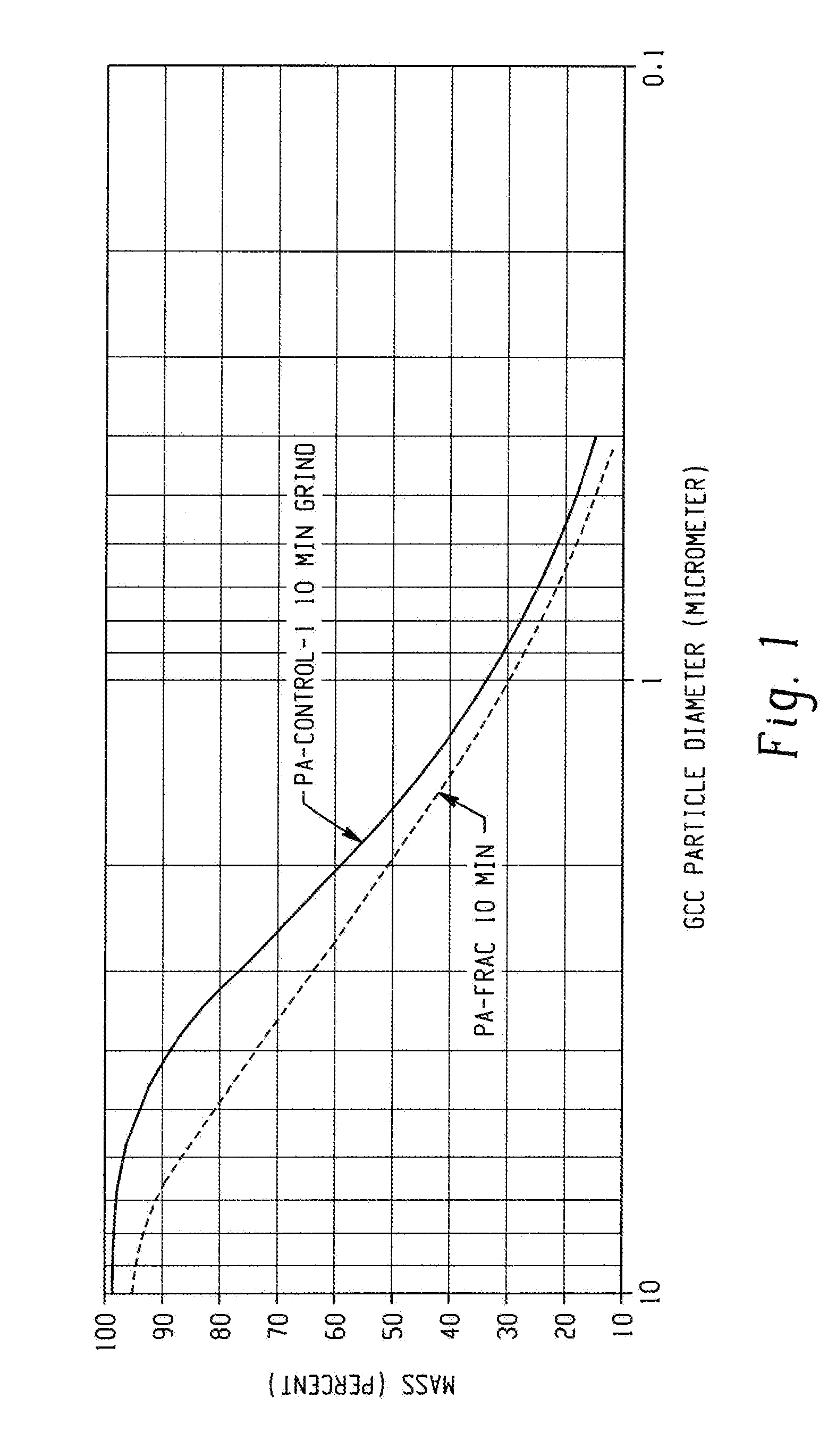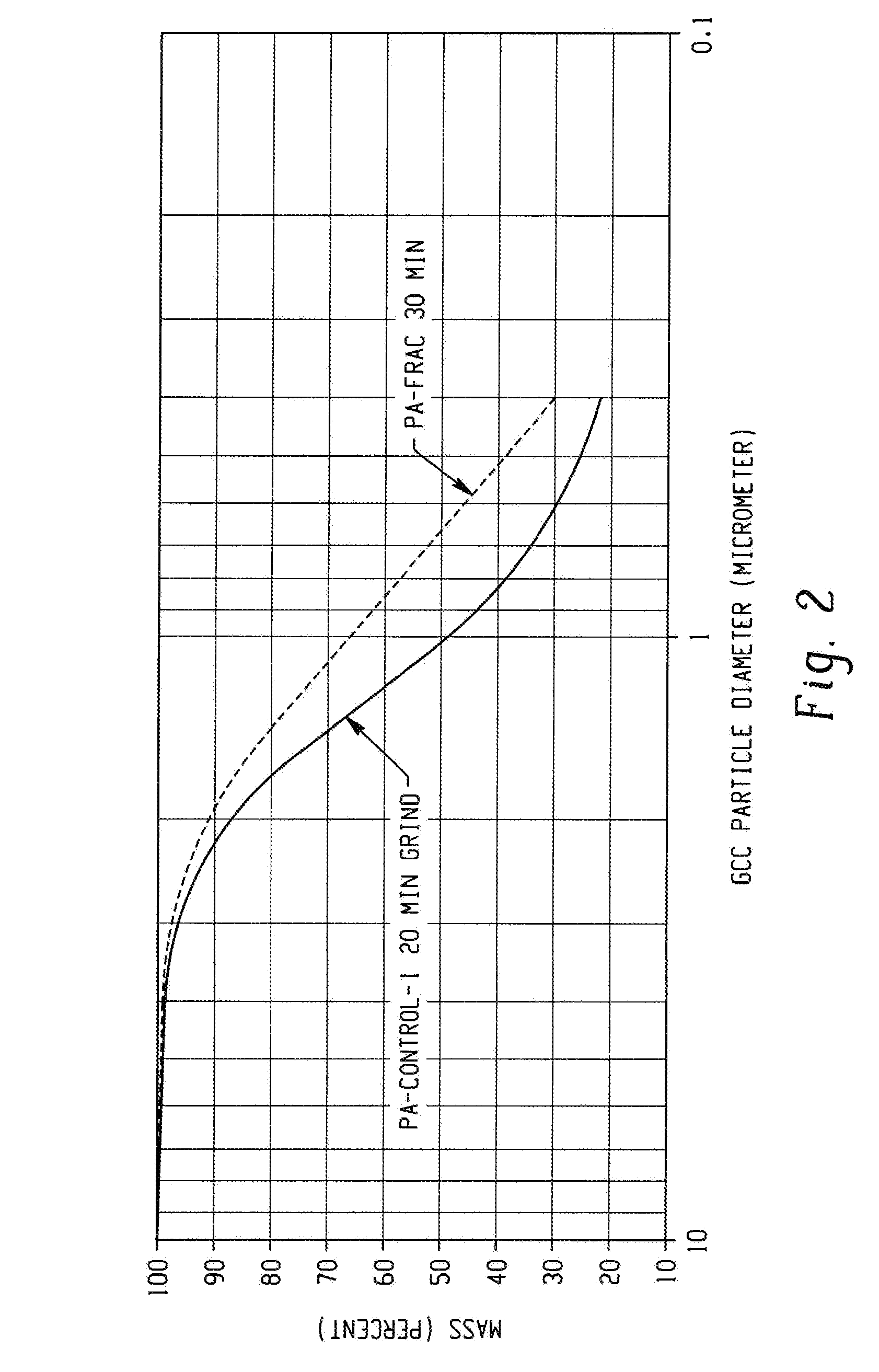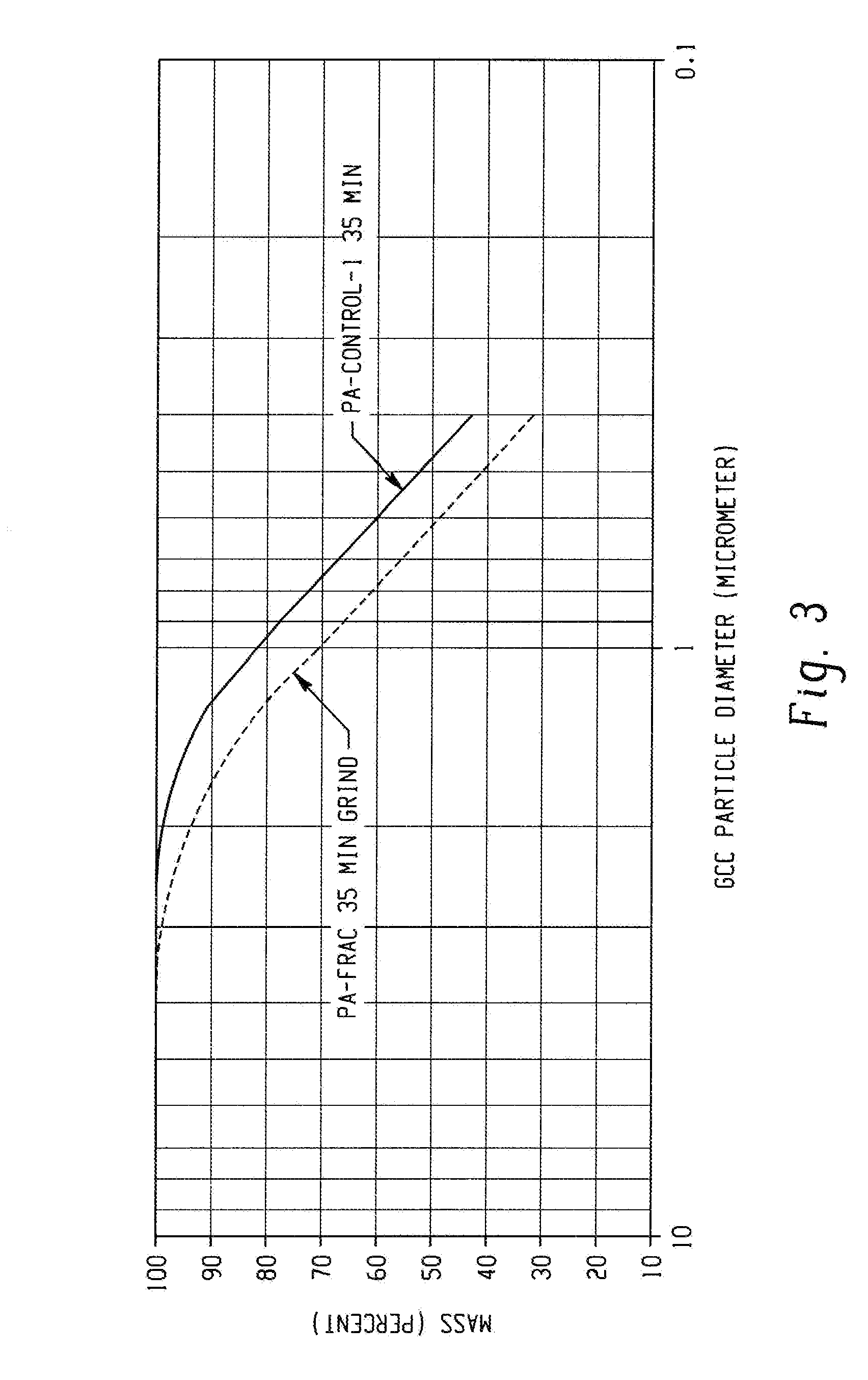Mineral Dispersants and Methods for Preparing Mineral Slurries Using the Same
a technology of mineral slurries and dispersants, applied in the field of slurries, can solve the problems of high energy consumption of both mill types, high installation cost of horizontal mills, and high viscosity of slurry
- Summary
- Abstract
- Description
- Claims
- Application Information
AI Technical Summary
Benefits of technology
Problems solved by technology
Method used
Image
Examples
example 3
[0049]In this example, a controlled polymerization polyacrylate (PA-control-1) was prepared in water using 4,4′-azobis(4-cyanopentanoic acid) as the free radical initiator and 2-(2-carboxyethylsulfanylthiocarbonylsulfanyl)propionic acid as chain transfer agent (CTA-1). The acrylic acid, azo initiator, and CTA-1 were combined in a mol ratio of 765:1:17, respectively, using 155 mL of a 3.5 M aqueous acrylic acid solution in a 0.5 L flask fitted with a condenser. The acrylic acid inhibitor was not removed. The solution was purged with nitrogen for 30 minutes then heated to 90° C. for four hours. The polymer solution was cooled to room temperature, and then neutralized to pH about 8.3 with a 50% wt / wt aqueous sodium hydroxide solution. Mw=5637; PDI=1.29.
example 4
[0050]In this example, a controlled polymerization polyacrylate (PA-controlled-2) was synthesized in accordance with the procedure set forth in Example 3 except that a solution of the initiator, acrylic acid, and half the water was added over 30 minutes to CTA-1 dissolved in the balance of the water that was heated to 90° C. Heating was continued for four hours at which time the solution was cooled, and then neutralized to pH about 8.3 with sodium hydroxide. Mw=4956; PDI=1.23. The low Mw and PDI demonstrate that polymers useful for this disclosure can be synthesized by semi-batch processes in addition to batch processes as described in Example 3. The results are summarized in Table 1.
example 5
[0051]In this example, a controlled polymerization polyacrylate (PA-control-3) was prepared as in Example 3 except that 2,2′-bis(propionic acid)trithiocarbonate (CTA-2) was used as the chain transfer agent and the acrylic acid:azo initiator:CTA-2 mol ratio was 1691:1:16.7, respectively, using 80 mL of a 6.94 M aqueous acrylic acid solution in a 0.25 L flask fitted with a condenser and mechanical stirrer. The acrylic acid inhibitor was not removed. The solution was purged with nitrogen for 30 minutes then heated to 90° C. for four hours. The polymer solution was cooled to room temperature, and then neutralized to pH about 8.3 with a 50% wt / wt aqueous sodium hydroxide solution. Mw=10,208; PDI=1.15.
PUM
| Property | Measurement | Unit |
|---|---|---|
| particle size | aaaaa | aaaaa |
| molecular weight | aaaaa | aaaaa |
| polydispersity | aaaaa | aaaaa |
Abstract
Description
Claims
Application Information
 Login to View More
Login to View More - R&D
- Intellectual Property
- Life Sciences
- Materials
- Tech Scout
- Unparalleled Data Quality
- Higher Quality Content
- 60% Fewer Hallucinations
Browse by: Latest US Patents, China's latest patents, Technical Efficacy Thesaurus, Application Domain, Technology Topic, Popular Technical Reports.
© 2025 PatSnap. All rights reserved.Legal|Privacy policy|Modern Slavery Act Transparency Statement|Sitemap|About US| Contact US: help@patsnap.com



